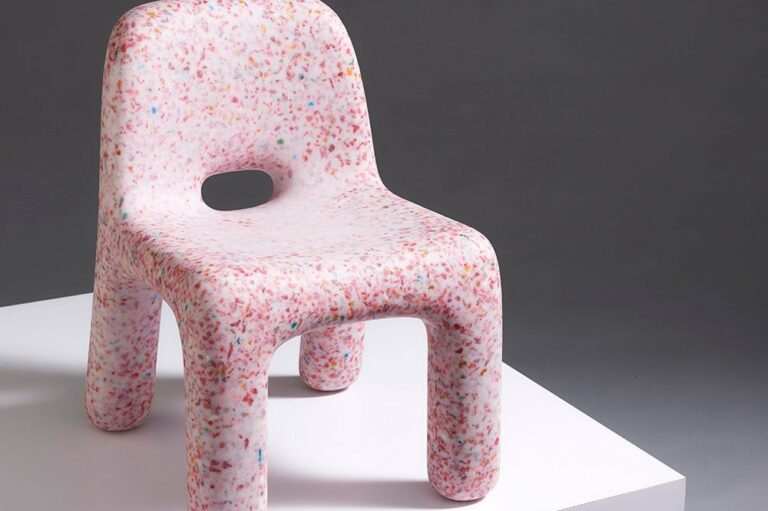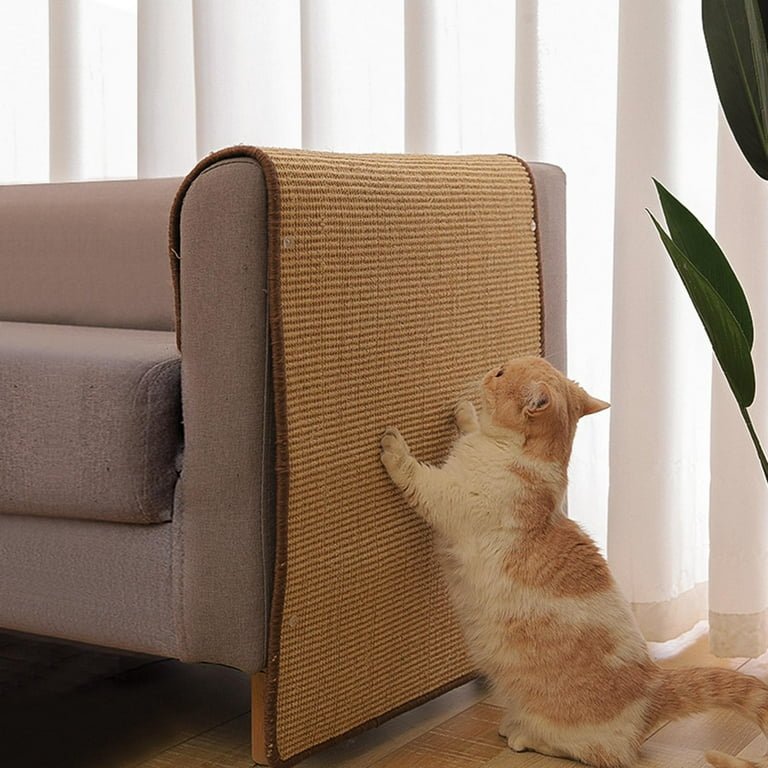Effortlessly Blend Eco-Friendly Furniture Into Minimalist Design
Today we discuss Eco-Friendly Furniture Into Minimalist Design. Look no further! Incorporating eco-friendly furniture into your minimalist aesthetic is not only possible but also a step towards sustainable living.
So, how to incorporate eco-friendly furniture into a minimalist design? We’ve got you covered. In this article, we will explore practical and creative solutions to seamlessly blend sustainability with minimalism, creating a harmonious and environmentally conscious space that you can feel great about. Let’s dive in!
How to Incorporate Eco-Friendly Furniture into a Minimalist Design?
Minimalist design is all about simplicity, functionality, and a clean aesthetic. It focuses on eliminating excess and keeping only what is necessary. In recent years, there has been a growing concern for the environment, leading many individuals to adopt eco-friendly practices in various aspects of their lives, including furniture choices.
By incorporating eco-friendly furniture into a minimalist design, not only can you create a visually appealing and clutter-free space, but you can also contribute to a healthier planet. In this article, we will explore different ways to seamlessly integrate sustainable furniture into your minimalist design, ensuring both style and environmental consciousness coexist harmoniously.
1. Embrace Sustainable Materials
When aiming for eco-friendly furniture, choosing the right materials is crucial. Opt for sustainable options such as:
- Bamboo: Known for its rapid growth and durability, bamboo is an excellent choice for furniture. It’s also renewable and biodegradable.
- Reclaimed wood: Salvaged wood from old buildings or furniture can be transformed into beautiful, unique pieces without causing further deforestation.
- Cork: Harvested from the bark of cork oak trees, this material is renewable, recyclable, and versatile, making it ideal for flooring, wall coverings, and furniture.
- Recycled plastic: Consider furniture made from recycled plastic, which helps reduce waste and encourages the recycling process.
- Organic textiles: When selecting upholstery or textiles, look for organic and natural fabrics like hemp, organic cotton, or linen, which minimize chemical usage and are biodegradable.
2. Choose Multifunctional Pieces
Minimalism often emphasizes functionality, and incorporating multifunctional furniture into your design serves both the minimalist and eco-friendly principles. Look for pieces that serve multiple purposes, such as:
- Sofa beds: A sofa that transforms into a bed can double as a guest sleeping area.
- Storage ottomans: These versatile pieces provide extra seating and hidden storage space for blankets, pillows, or other items.
- Convertible tables: Tables that can extend or fold down allow for flexibility in space usage.
- Modular shelving systems: These customizable systems can adapt to changing needs and accommodate different storage requirements.
By investing in multifunctional furniture, you can optimize your space while minimizing the number of items you need, reducing consumption and waste.
3. Prioritize Quality and Durability
In a minimalist design, quality takes precedence over quantity. Choosing well-crafted, durable furniture not only ensures longevity but also reduces the need for replacement or repairs. When furniture stands the test of time, it helps prevent the accumulation of waste in landfills.
Consider the following tips when selecting minimalist, eco-friendly furniture:
- Research brands committed to sustainability: Look for furniture manufacturers that prioritize environmentally friendly practices, use high-quality materials, and have certifications such as Forest Stewardship Council (FSC) or Greenguard.
- Read reviews: Engage with customer reviews to assess the quality and durability of furniture pieces before making a purchase.
- Assess construction and materials: Look for solid wood construction, sturdy joints, and non-toxic finishes. Avoid furniture made with particleboard or low-quality materials that may emit harmful substances.
Choosing durable furniture promotes a more sustainable lifestyle by reducing waste and minimizing the ecological footprint.
4. Incorporate Secondhand and Vintage Pieces
One of the most sustainable approaches to furnishing a minimalist design is to embrace secondhand and vintage furniture. By giving used items new life, you prevent them from entering the waste stream and reduce the demand for new furniture production.
Consider the following options:
- Thrift stores and consignment shops: Explore local thrift stores or consignment shops to find unique, pre-loved furniture pieces.
- Online marketplaces: Utilize online platforms like Craigslist, eBay, or Facebook Marketplace to discover a broader range of secondhand furniture options in your area.
- Antique stores and flea markets: Visit antique shops and flea markets to find vintage and timeless furniture that can add character to your minimalist space.
When purchasing secondhand furniture, inspect the quality and condition to ensure it meets your requirements. Additionally, consider refurbishing or repurposing items to tailor them to your style and needs.
5. Support Local Artisans and Sustainable Brands
Another way to incorporate eco-friendly furniture into your minimalist design is by supporting local artisans and sustainable brands. By doing so, you contribute to local economies and encourage responsible production practices.
Research local furniture makers in your area who prioritize sustainable materials and processes. These artisans often create unique, handcrafted pieces that can become a focal point of your minimalist design.
Additionally, explore sustainable furniture brands that align with your values. Look for certifications like B Corp or Fair Trade, which ensure ethical practices and fair treatment of workers. Many sustainable brands use environmentally friendly materials and implement eco-conscious production methods.
6. Implement Proper Waste Management
While choosing eco-friendly furniture is essential, proper waste management is equally crucial. When replacing your existing furniture or disposing of old items, consider the following options to minimize environmental impact:
- Donate: If your furniture is still in good condition, consider donating it to local charities, shelters, or nonprofit organizations.
- Recycle: Check with your local waste management facilities to see if they accept furniture for recycling. Separate materials like wood, metal, or plastic for appropriate recycling.
- Upcycle and repurpose: Get creative and find ways to repurpose old furniture within your own space or donate it to individuals who enjoy upcycling projects.
- Sell: If your furniture is in good condition, consider selling it online or organizing a garage sale to give it a second life while recovering some of your investment.
Taking responsible actions toward waste management ensures that your eco-friendly efforts extend beyond just purchasing sustainable furniture.
7. Pay Attention to Indoor Air Quality
When selecting eco-friendly furniture, consider its impact on indoor air quality. Some furniture may emit volatile organic compounds (VOCs) or other harmful substances that compromise the health of your living environment.
Look for furniture that meets the following criteria:
- Low VOC emissions: Choose furniture labeled as low VOC or VOC-free to prevent indoor air pollution.
- Natural, non-toxic finishes: Opt for furniture with natural finishes and coatings, such as water-based varnishes or plant-based oils. These alternatives reduce the release of harmful chemicals.
- Greenguard certification: Look for furniture with Greenguard certification, which ensures low chemical emissions and promotes healthy indoor air quality.
Prioritizing furniture that supports good indoor air quality helps create a healthy living space for you and your family.
8. Explore Minimalist Design Principles
To fully incorporate eco-friendly furniture into a minimalist design, it’s essential to understand and apply minimalist design principles. By embracing simplicity and functionality, you can create a cohesive and visually appealing space while keeping environmental sustainability in mind.
Consider the following aspects when implementing minimalist design:
- Declutter: Remove unnecessary items and embrace a clutter-free environment. Allow your furniture to stand out as focal points.
- Neutral color palette: Choose neutral colors like whites, grays, or earth tones for larger furniture pieces. These colors create a serene ambiance and provide flexibility in styling.
- Simple lines and shapes: Opt for furniture with clean lines and simple shapes that complement the minimalist aesthetic.
- Mindful placement: Arrange furniture strategically, allowing ample space for movement and optimizing natural light.
- Focus on natural light: Maximize natural light by using sheer curtains or blinds that allow sunlight to enter while maintaining privacy.
By incorporating these minimalist design principles, you can achieve a cohesive, eco-friendly space that promotes a sense of calm and well-being.
9. Complement with Sustainable Accessories
In addition to eco-friendly furniture, you can enhance your minimalist design with sustainable accessories. These small details can add visual interest while maintaining a sustainable approach.
Consider the following options:
- Recycled or upcycled decor: Look for decorative items made from recycled materials or repurposed objects.
- Plants: Introduce indoor plants to bring nature indoors. They improve air quality and add a touch of greenery to your minimalist space.
- Natural fibers: Choose sustainable textiles for rugs, curtains, or cushions, such as jute, hemp, or organic cotton.
- Energy-efficient lighting: Opt for LED bulbs or fixtures that utilize energy-saving technologies.
These sustainable accessories can complement your eco-friendly furniture, promoting a cohesive and environmentally conscious design.
10. Educate Yourself and Advocate for Change
Lastly, remember that incorporating eco-friendly furniture into a minimalist design is just one step toward a sustainable lifestyle. Take the opportunity to educate yourself about environmental issues and contribute to positive change.
Stay informed about sustainable practices, learn about the impact of the furniture industry on the environment, and share your knowledge with others. By advocating for change and making conscious choices, you can inspire others to follow suit, creating a more sustainable future
HOW TO SOURCE ECO FRIENDLY FURNITURE FOR YOUR SLOW HOME | Conscious Consumerism | Slow Living
Frequently Asked Questions
How can I incorporate eco-friendly furniture into a minimalist design?
To incorporate eco-friendly furniture into a minimalist design, start by choosing furniture made from sustainable materials such as bamboo, reclaimed wood, or recycled plastic. Opt for pieces that are designed with simplicity and clean lines to align with minimalism. Consider multifunctional furniture to maximize space and functionality. Look for certifications such as FSC (Forest Stewardship Council) or Cradle to Cradle that ensure environmentally-friendly production processes. Also, consider second-hand or vintage furniture to reduce waste and give old pieces new life. Ultimately, strive for a balance between eco-consciousness and minimalist aesthetics.
Can I incorporate eco-friendly furniture without compromising on the minimalist style?
Absolutely! Incorporating eco-friendly furniture doesn’t mean compromising on the minimalist style. Look for furniture designs that prioritize simplicity, clean lines, and functionality. Opt for materials like bamboo, which can be crafted into sleek and minimalist designs. Choose neutral or earthy colors that complement the minimalist aesthetic. Additionally, focus on quality rather than quantity when selecting furniture pieces, as this aligns with both minimalism and eco-consciousness.
Where can I find eco-friendly furniture for my minimalist design?
There are several places where you can find eco-friendly furniture for your minimalist design. Start by exploring local furniture stores that specialize in sustainable and eco-friendly products. You can also search online marketplaces that promote ethical and environmentally-friendly products. Another option is to visit thrift stores and vintage shops to find unique and eco-friendly pieces. Additionally, consider supporting local artisans who create furniture using sustainable materials and methods.
How can I determine if a piece of furniture is truly eco-friendly?
Determining the eco-friendliness of a furniture piece requires some research. Look for certifications and labels such as FSC (Forest Stewardship Council), which ensures that the wood used is sustainably sourced. Other labels like Cradle to Cradle indicate that the product is designed with the environment in mind. Additionally, read product descriptions and company websites to learn more about their sustainable practices, materials used, and production processes. Don’t hesitate to reach out to the manufacturer or retailer directly if you have specific questions about a product’s eco-friendliness.
Can I incorporate eco-friendly furniture into a small space minimalist design?
Absolutely! Eco-friendly furniture can be incorporated into a small space minimalist design. Start by selecting furniture pieces that are compact and multifunctional to maximize space utilization. Consider space-saving designs like modular furniture or pieces with built-in storage compartments. Look for furniture made from sustainable materials that are lightweight yet durable. Additionally, explore vertical storage solutions and utilize wall space efficiently. By combining eco-friendly choices with minimalist principles, you can create an environmentally-conscious and stylish small space design.
Final Thoughts
Incorporating eco-friendly furniture into a minimalist design is a powerful way to create a sustainable and aesthetically pleasing living space. By choosing furniture made from recycled or renewable materials, such as bamboo or reclaimed wood, individuals can contribute to reducing their carbon footprint. Additionally, opting for minimalist designs helps to declutter the space and promote a sense of calm and serenity. As we strive to create a more environmentally conscious society, the integration of eco-friendly furniture into minimalist designs is a key step towards a greener future.




